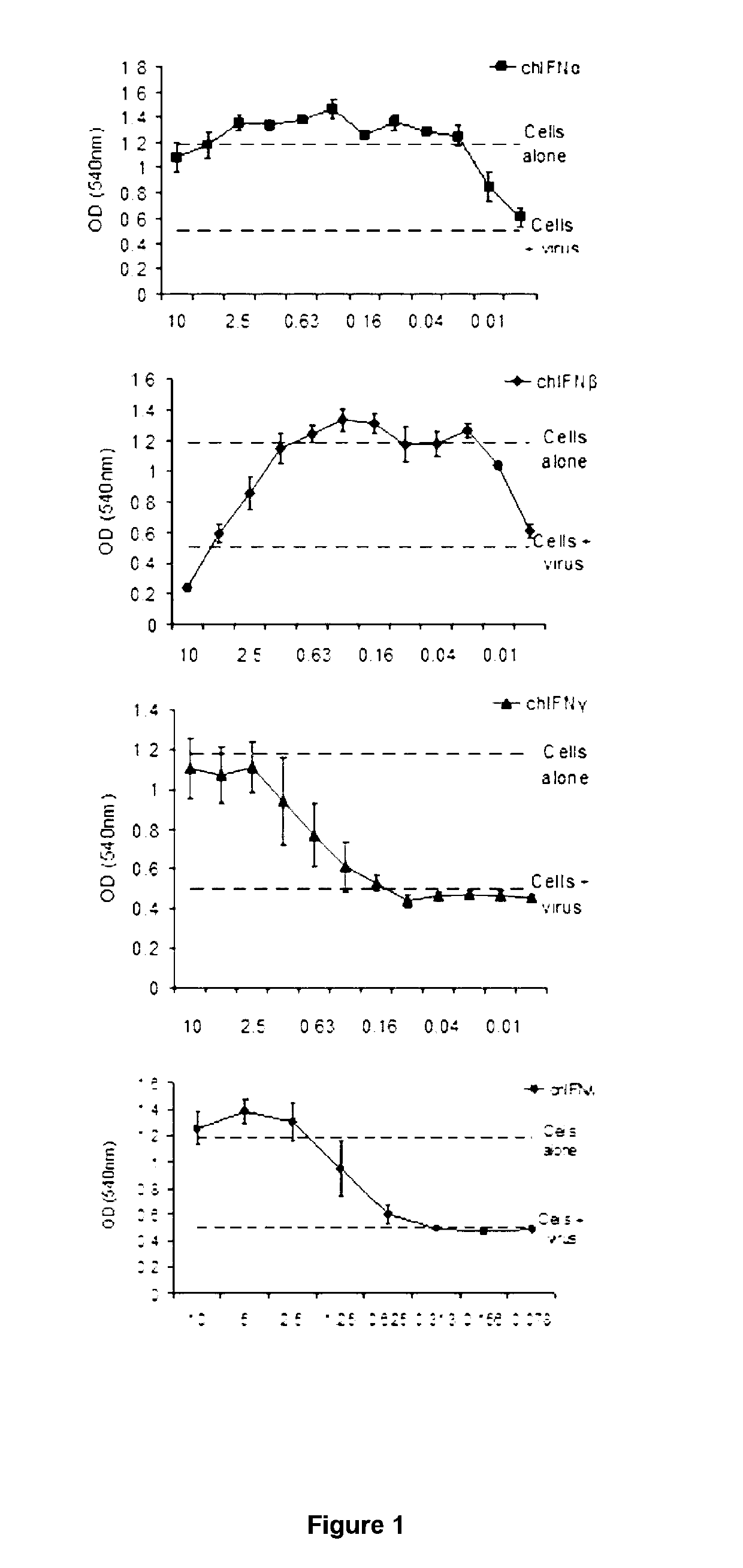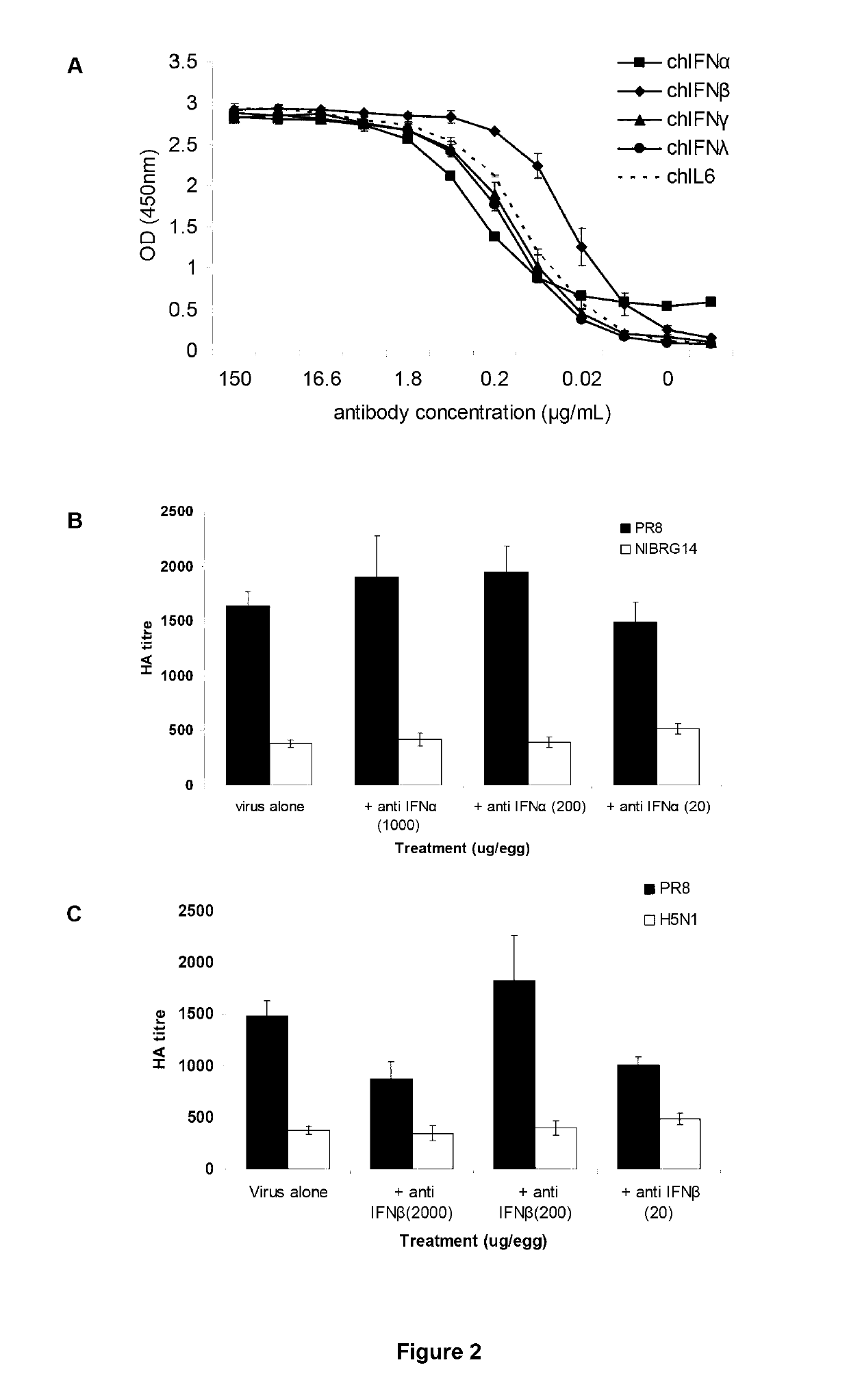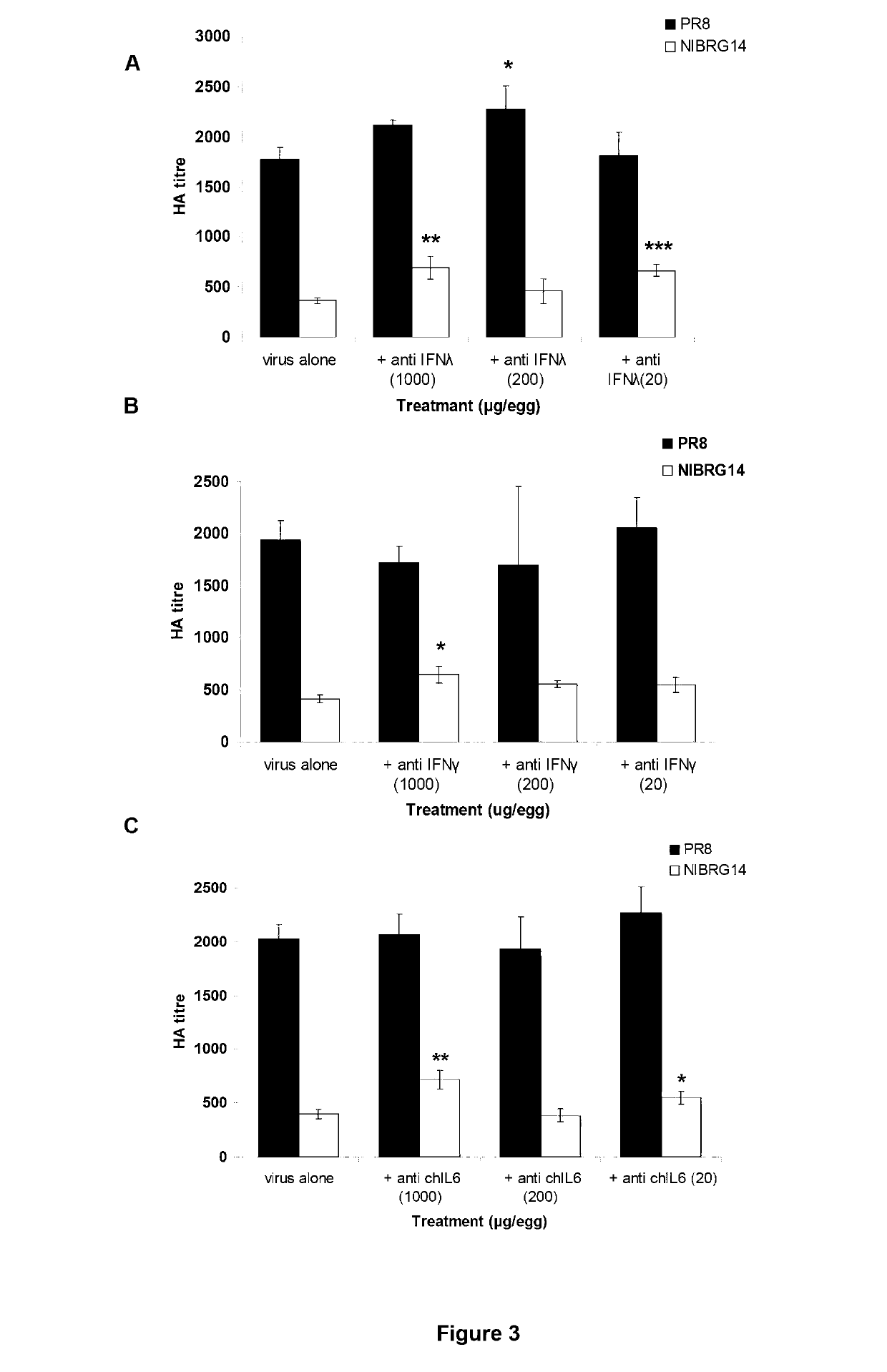Production of viruses in cell culture
a cell culture and virus technology, applied in the field of cell culture production of viruses, can solve the problems of adverse economic and social consequences, virus production cost, and important health problem of virus infection, and achieve the effect of reducing the expression of antiviral genes and/or the level of antiviral protein activity, and increasing viral production
- Summary
- Abstract
- Description
- Claims
- Application Information
AI Technical Summary
Benefits of technology
Problems solved by technology
Method used
Image
Examples
example 1
n of Interferon Response by Neutralizing Antibodies Increases Viral Yield in Ovo
[0196]The ORF of ChIFNα, ChIFNβ, ChIFNγ and ChIFNλ were expressed in Top F′10 Escherichia coli (E. coli) competent cells using a pQE50 expression system and after induction with IPTG. Recombinant protein was solubilised and purified using Ni-NTA-Agarose. Biological activities of rchIFNs were measured using a virus neutralization assay (Lowenthal et al., 1995). rchIFNs protected cells over a range of concentrations and therefore are biologically active (FIG. 1).
[0197]The rchIFNs were used as immunogens to generate rabbit antiserum against the homologous recombinant protein. New Zealand female white rabbits were immunized subcutaneously with the rchIFN protein in Quilaja saponaria (Quil A) cocktail adjuvant up to 7 times. Ammonium sulphate was used to enrich the globular serum proteins in the rabbit anti-chIFN antiserum. Enriched antisera were quantified using a Spectrophotometer (NanoDrop® ND-1000, NanoDr...
example 2
n of Numerous Genes by siRNA In Vitro Increases Viral Titres In Vitro
[0200]In order to identify gene candidates with an antiviral function a set of genes were evaluated by small interference RNA (siRNA) assay. DF-1 cells were transfected with a multiplex (smartpool) of siRNA against each gene prior infection with avian influenza (AI) virus. The results show an increase in viral titres after KD without any apparent toxic effect on the cells (FIG. 4). At least in some instances no apparent affect was observed but this may be due to the siRNA not being administered early enough to produce efficient KD (for example, considering the anti-IL6 antibody data this will most likely explain the IL-6 siRNA data in FIG. 4). For CNOT4, IFNAR or MDA5 the effect of individual smartpool siRNAs on cell viability and gene silencing was assessed (FIG. 5).
example 3
lation of Numerous Genes by shRNA in Ovo Increases Viral Titres
[0201]For in ovo analysis, siRNA was delivered as complexes with ABA-21 / 117Q / PF polymer (ABA-21 / 117Q; polymer without PolyFluor 570 dye labels) at molar ratios of 4:1 of polymer to 2 nmol siRNA in a total of 200 μl. Complexes were formed in aqueous solution in the presence of phosphate-buffered saline (PBS). The required amount of polymer (316 μg), resuspended in water, was added to the tubes and mixed by vortexing. A total of 2 nmol, equivalent to 30 μg of siControl or 24.5 μg of siAntiIFNAR1 was then added to the tubes and the sample vortexed. Complexion was allowed to continue for 1 h at room temperature. Complexes were injected directly into the corioallantoic fluid. After 48 hours virus was injected as previously described and samples were collected 24 hours after virus infection. Results show an increase of virus growth after KD of IFNAR1 (FIG. 6 and FIG. 7).
PUM
| Property | Measurement | Unit |
|---|---|---|
| molecular weight | aaaaa | aaaaa |
| molecular weight | aaaaa | aaaaa |
| molecular weight | aaaaa | aaaaa |
Abstract
Description
Claims
Application Information
 Login to view more
Login to view more - R&D Engineer
- R&D Manager
- IP Professional
- Industry Leading Data Capabilities
- Powerful AI technology
- Patent DNA Extraction
Browse by: Latest US Patents, China's latest patents, Technical Efficacy Thesaurus, Application Domain, Technology Topic.
© 2024 PatSnap. All rights reserved.Legal|Privacy policy|Modern Slavery Act Transparency Statement|Sitemap



